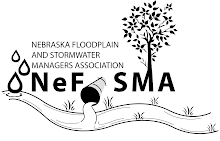Hydraulic Model of the Central Platte River to Determine Habitat Availability for Three Threatened and Endangered Bird Species. Steve Smith, P.E. - Executive Director’s Office of the Platte River Recovery Implementation Program
Statement of learning objectives: Attendees will learn how an interstate and federal Program is using a hydraulic model of the Central Platte River to determine habitat availability for three threatened and endangered bird species.
Proposed Presentation: The Platte River Recovery Implementation Program (Program) was initiated on January 1, 2007 between Nebraska, Wyoming, Colorado, and the Department of the Interior to address endangered species issues in the central and lower Platte River basin. The species considered in the Program, referred to as “target species”, are the whooping crane, piping plover, interior least tern, and pallid sturgeon. Program participants have reached an agreement for participation in the First Increment of the Program for the period from 2007 through 2019.
The Program’s management objectives include improvement of the survival of whooping cranes during migration, and improvement of least tern and piping plover production. One of the management strategies to achieve these objectives is the Flow-Sediment-Mechanical (FSM) strategy. This strategy includes mechanical creation of target species habitat (e.g., building sandbars), and use of short duration high flows (SDHF) in combination with sediment augmentation to create and maintain habitat for target species.
Habitat preferred by the Program target species includes wide, braided, non-vegetated river conditions ideal for nesting and roosting. Reduced streamflow and occurrence of invasive vegetation have resulted in a reduction of preferred habitat area. A HEC-RAS hydraulic model of a 153-mile reach of the Central Platte River was used to estimate the magnitude of streamflow necessary to scour invasive vegetation. The hydraulic model was also used to determine sandbar height and channel width that would maximize flow scour potential, while minimizing the risk of nest inundation.


No comments:
Post a Comment